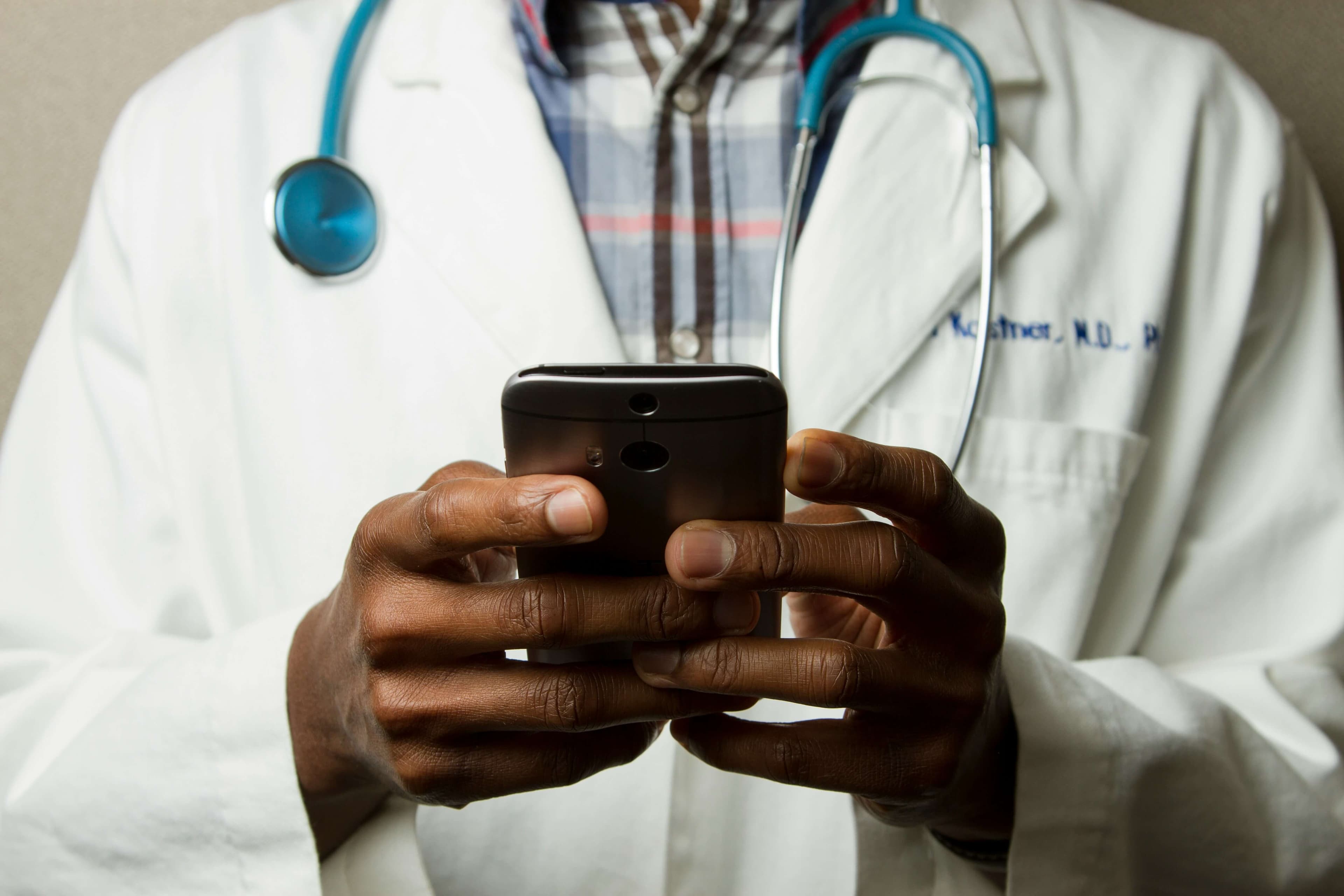Table of Contents
Growing cyber threats in telehealth
Telehealth has opened doors for patients everywhere, connecting them to care in ways once thought impossible. But that same connection has also opened new doors for cyber threats. Patient identities, electronic health records (EHRs), and third-party integrations all expand the attack surface.
Because telehealth relies on a web of connected apps, APIs, and remote devices, traditional perimeter defenses are no longer enough. Modern authentication has become the most reliable way to prevent fraud, unauthorized access, and identity misuse across patients, providers, and vendors alike.
This blog covers:
Why identity has become the new perimeter in healthcare security.
How telehealth systems can implement authentication that scales without slowing down care.
Ways modern methods like passwordless and adaptive authentication help teams strengthen security while keeping logins seamless for patients and providers.
Growing cyber threats in telehealth
It’s no surprise that telehealth is one of the most common targets for cybercrime. Patient data and other protected health information (PHI) are extremely sensitive, and large amounts of it are produced and circulated daily—not to mention stored long-term—across the industry.
A longitudinal study from Rutgers’ Policy Lab shows how telehealth cybersecurity concerns have increased in recent years. Of the 14,655 total data breaches recorded from 2014 to 2022, just over a third (4,959) targeted the healthcare industry. This represents the biggest share of data breaches of any market segment, which Rutgers’ experts attribute to the growth of telehealth.
Common attack vectors impacting telehealth and healthcare more broadly include:
Phishing and other social engineering scams that solicit information from victims
Direct theft of credentials and other information from unprotected networks
Man-in-the-middle (MITM) attacks targeting weak third-party communications
Intrusions via weak links in insecure application programming interfaces (APIs)
What all these attack vectors share is vulnerability related to user accounts and access.
Because remote and hybrid care models rely on much larger, disparate networks of devices, along with bring-your-own-device (BYOD) and third-party integrations, they carry greater risk.
Core principles of telemedicine cybersecurity
Like cyberdefense in any other industry, telehealth cybersecurity needs to prevent unauthorized access to sensitive data and systems. However, special compliance considerations make that goal much more complicated in a telehealth context than in less regulated industries or niches.
Namely, telehealth stakeholders are generally subject to the Health Insurance Portability and Accountability Act of 1996 (HIPAA). HIPAA applies directly to covered entities such as providers and indirectly to business associates who work with them, so its reach can be surprisingly wide.
Per HIPAA’s Privacy Rule and Security Rule, three pillars need to be supported:
Confidentiality – PHI needs to be de-identified, and individual identities need to be protected. This requires safeguarding patient data in transit and at rest.
Integrity – PHI cannot be tampered with, and all changes need to be fully authorized and monitored. This ensures all deletions, additions, and other modifications are accounted for.
Availability – PHI needs to be available to its subjects, upon request, along with certain other parties (e.g., law enforcement) as detailed under Required Uses and Disclosures.
Authentication underpins all of these pillars. Ensuring that a person is who they claim to be is necessary to verify that their intended use is permissible under HIPAA. This is why implementing identity and access management (IAM) for healthcare is one of the best ways to ensure airtight security and seamless compliance.
The role of authentication in telemedicine security
On a more practical level, authentication in the context of telehealth verifies both provider and patient entities. It ensures that access to PHI is granted only to properly identified individuals with the correct HIPAA permissions.
Ultimately, sound authentication is a baseline requirement for complying with HIPAA’s Privacy and Security Rules.
Aside from being one of the few ways to ensure that uses and disclosures of electronic PHI (ePHI) fall within the bounds of permitted and required, authentication controls are directly required by the Security Rule. One of the specific Technical Safeguards requires “procedures to verify that a person seeking access to ePHI is who they say they are.” Sound authentication also facilitates meeting Access Control mandates to “allow only authorized persons to access ePHI.”
In addition, telehealth stakeholders may be subject to other regulatory initiatives that overlap with HIPAA. For example, vendors that process credit card payments and information are subject to the Payment Card Industry Data Security Standards (PCI DSS), which requires strong access controls. Local, federal, and international data privacy laws may also come into play.
Authentication and authorization also form core parts of interoperable frameworks like SMART on FHIR, which governs how healthcare apps securely connect to EHR systems. OAuth and OpenID Connect provide the foundations for how apps request access, how users such as clinicians or patients grant permission, and how that access is logged and monitored.
One specific way authentication can meet these regulatory requirements is through passwordless authentication—a gold standard for seamless patient login (more on this below).
Methods for secure telehealth authentication
Authentication methods do more than strengthen security; they also create smoother, more seamless experiences by enabling interoperability across connected systems and applications.
Some of the most effective methods to consider, whether used individually or together, include:
Passwordless authentication – Methods that de-prioritize or eliminate passwords help create a smooth, secure login experience for patients, vendors, and third parties. Without a password, there are fewer aspects for users to manage (and/or for cybercriminals to steal or solicit).
Multi-Factor Authentication (MFA) – By requiring two or more authenticating factors, such as knowledge, inherence, or possession factors, MFA can prevent unauthorized access to PHI. (Consider phishing-resistant MFA to maximize the effectiveness of this approach.)
Single Sign-On (SSO) – SSO systems consolidate login and account management across linked programs and apps, improving provider-side efficiency while maintaining security.
Federated identity – Federation enables interoperability across electronic health records (EHRs) and various third-party apps and ecosystems in which they reside. Compared to SSO, identity federation offers similar user-side efficiency but across more platforms.
Adaptive authentication – This method uses contextual risk data (e.g., location, device, behavior) to determine access, re-authenticate, terminate sessions, and otherwise step up security when needed. The result is maximized security without compromising the user experience.
These methods all have their strengths and weaknesses. With that in mind, the best comprehensive approach to authentication in telehealth often combines multiple controls simultaneously. A robust, flexible, no-code auth platform should be able to accommodate all these functions (and more).
How to strengthen telehealth authentication
In the complicated, sensitive environment of telehealth, maximizing the effectiveness of authentication and access control is crucial. On one level, telehealth providers can implement healthcare IAM best practices like baseline authentication and authorization.
On another level, there are best practices specific to the telehealth niche to consider:
Enforce MFA for both patients and providers. MFA programs make logging in and managing accounts both easier and more secure, which has knock-on effects like reducing user fatigue, account resets, and inefficient uses of IT support resources.

Implement short token lifetimes and session timeouts. Limiting sessions to short durations (e.g., 15 minutes) minimizes risk. However, users should receive a session timeout warning before expiration to minimize frustrations or feelings of being rushed.
Encrypt all data transmissions (e.g., TLS/SSL). Data needs to be encrypted as a backup to access control, ensuring unauthorized parties cannot read any ePHI that is stolen or lost.
Regularly audit authentication logs and access patterns. Monitoring user access allows for short- and long-term adjustments, like step-up security based on observed behavior.
Educate users about credential hygiene and phishing awareness. By guiding users through account management and staying available for support, telehealth teams can stay compliant while making logins smoother and safer.
Importantly, these practices all balance security with user experience considerations.
It cannot be overstated how impactful frictionless identity verification is in telehealth. A seamless user experience can be the difference between retention and churn, as patients’ frustrations with other elements of the broader healthcare system impact their time spent navigating telehealth portals. Anything providers can do to improve the experience, without compromising on security and compliance, can help keep users satisfied and loyal long-term.
Putting strong authentication into practice
Strong authentication lies at the heart of telehealth cybersecurity. Whether through passwordless login, multi-factor authentication, or adaptive access, confirming each user’s identity is the most effective way to prevent fraud, meet compliance requirements, and maintain a smooth experience for patients and partners. The best strategies combine multiple methods—balancing robust access control with the frictionless login experience patients expect.
For healthcare teams looking to streamline these workflows, Descope offers a no-code platform that enables secure, patient-friendly authentication flows to be implemented in minutes. Organizations like GoodRx, SmithRx, and Owens & Minor use Descope to deliver frictionless, flexible healthcare experiences—faster and more securely.
Sign up for a Free Forever account with Descope and start building safer, smarter login experiences today. Have questions about authentication for telehealth? Book time with our auth experts.






